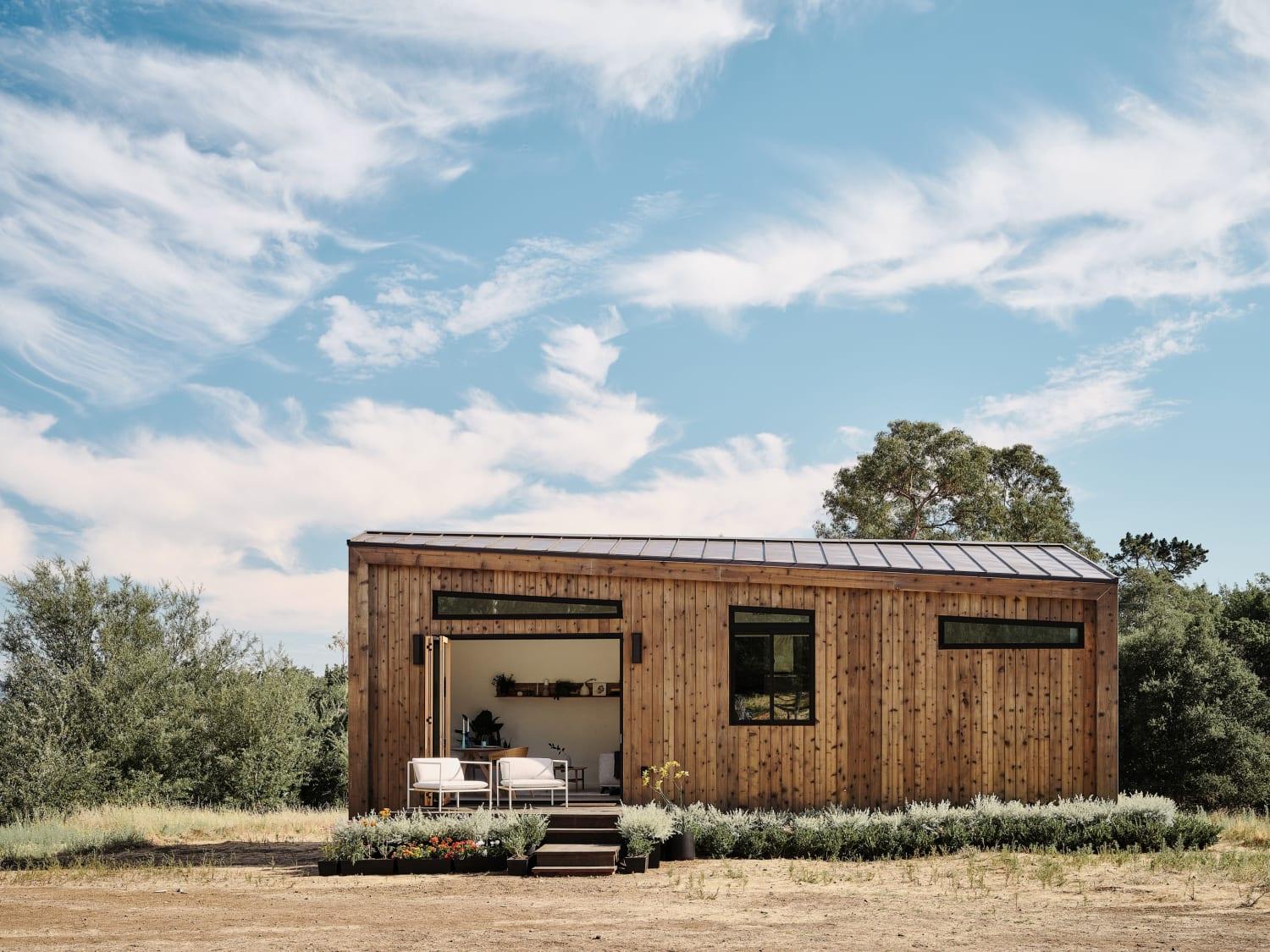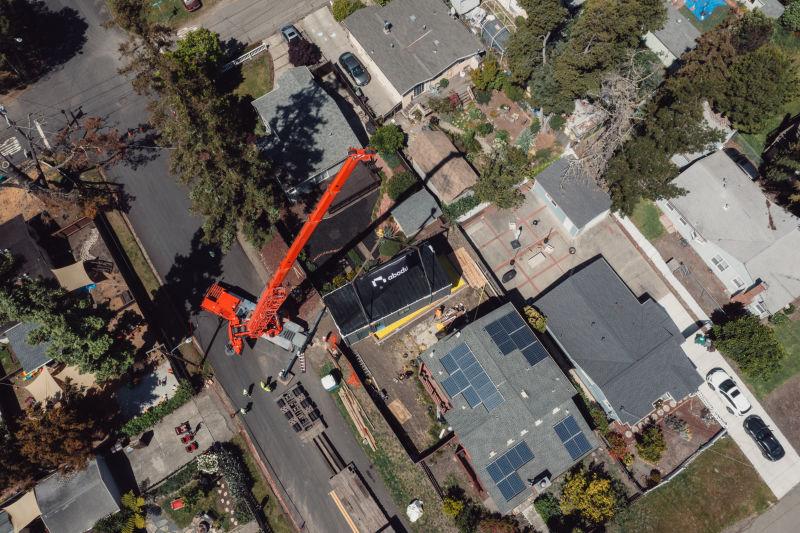A Homeowner's Guide to Prefab ADUs in California
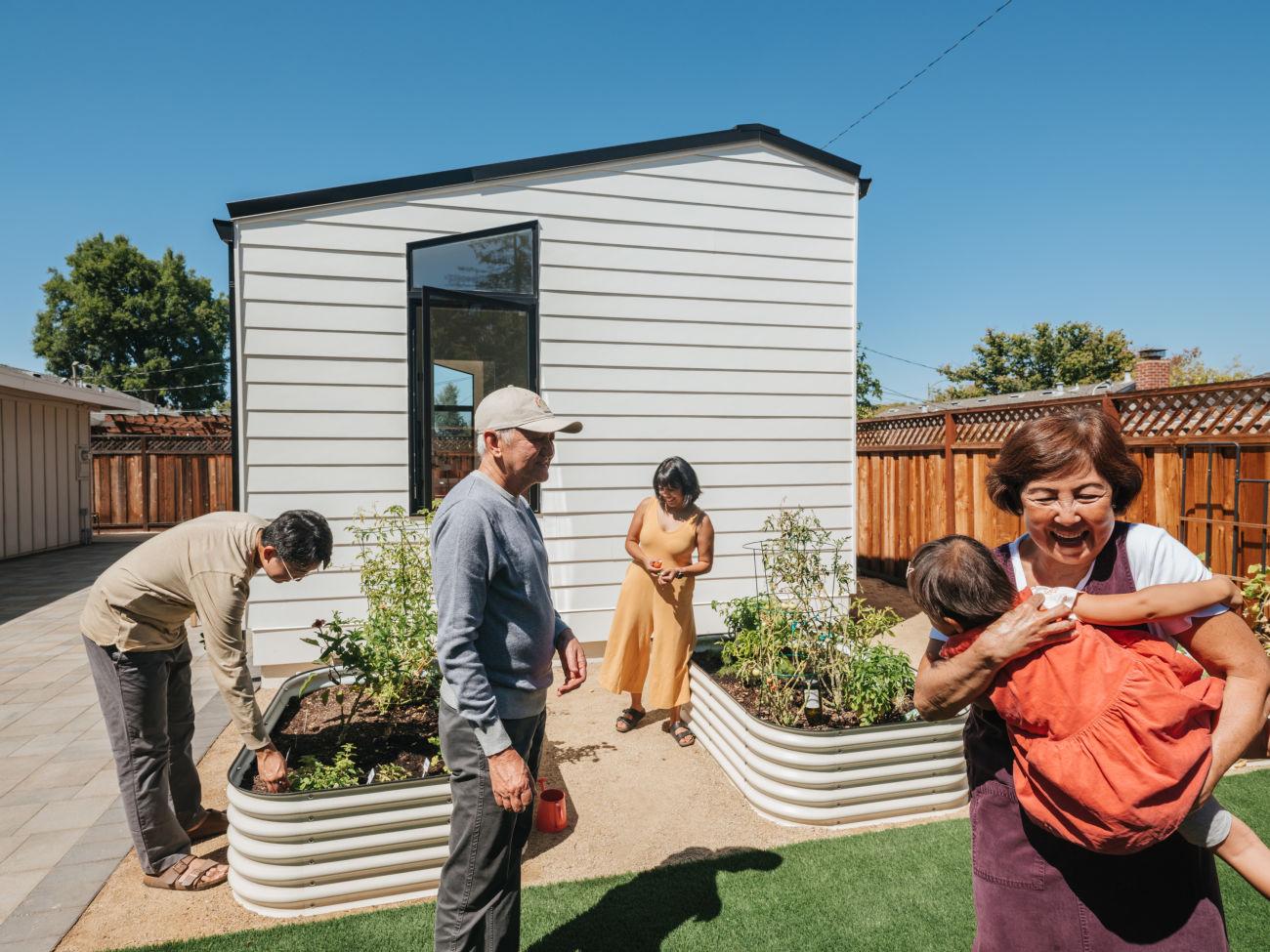
Abodu
Do you live in California and want to add a prefab ADU to your backyard? You’ve come to the right place. Below we outline the different types of prefab ADUs, the benefits of going prefab vs. stick-built, the considerations you need to take before starting your project, and an overview of what the prefab ADU process looks like.
What Are Prefab ADUs?
Definition of ADUs
To get started, prefab is short for “prefabricated” and means that a unit is built in a climate controlled factory off site and then placed at its final destination.
ADU, or “accessory dwelling unit” is a fully livable space that’s built on the same property as a primary residence. ADUs must have a kitchen, bathroom and sleeping area to be considered a livable space, if they don’t have those defined spaces, it’s a shed.
Types of ADUs
Modular ADUs: This kind of ADU is constructed in modules and then transported and assembled on site.
Panelized Prefab ADUs: Panelized ADUs are built using prefabricated wall panels, floor systems, and roof trusses off site and then assembled on site, which allows for faster construction.
Manufactured ADUs: A manufactured ADU is built entirely off site and then transported and placed on site. This style of ADU adheres to strict building codes and offers more customization.
Advantages of Prefab ADUs
Speed and efficiency of construction: The design of prefab ADUs are predetermined, and therefore all the labor and material are accounted for and assembled in a controlled factory, which makes construction faster.
Cost-effectiveness: Because designs are predetermined there’s less risk for issues in the construction, and materials are predetermined, which can make prefab a less expensive option.
Customization options: Prefab designs are anything but plain, and many builders offer aesthetic customization options and appliance upgrades.
Sustainability and eco-friendly features: Prefab units have less material waste meaning more sustainability, and you can opt for eco-friendly appliances and add-ons.
Benefits and Considerations of Prefab ADUs for Homeowners
Addressing housing needs and increasing property value
Prefab ADUs offer a cost-effective and sustainable solution to the housing shortage in California by creating additional living space on existing properties. They also increase property value by offering additional space and potential for passive rental income.
Rental income potential and financial benefits
ADUs give homeowners the option to rent out the living space as short, medium and long-term housing, which can create additional passive income. Every jurisdiction has rules and regulations on the types of rental you can have, so check with your local planning office for details.
Multigenerational living and aging in place
Many families are opting to purchase a prefab ADU for their aging parents, which allows everyone the independence they want while staying close. Grandparents are able to spend more time with grandkids, and ADUs allow them to age in place instead of having to live out their golden years in a nursing facility or senior living center.
Considerations for homeowners before investing in a Prefab ADU
Zoning and permitting regulations: Every area has specific zoning regulations and permitting requirements, including size, setbacks, and parking requirements. Check with your local planning office to understand your restrictions.
Available space and site preparation: Assess your property’s available space and consider any necessary modifications, like tree removal or utility connections to accommodate your ADU.
Financing options and budget considerations: There are many options for financing your ADU, including grants and loans. When considering your budget don’t forget to include site prep and grading, permitting fees, craning, and utility trenching.
Homeowners association (HOA) restrictions: While state regulations prohibit HOAs from making it too cost prohibitive to build an ADU, you still need to check with your HOA on guidelines and requirements and obtain any necessary approvals.
Designing and Customizing Your Prefab ADU
Selecting the appropriate floor plan and layout
First decide what you want to do with your prefab ADU — will you use it for your office, gym, rental unit, or family guest house?
Think about all the functionality you’d like to get out of the space and then determine how many bedrooms you’ll need, what size living room and kitchen you want, and any other lifestyle needs you should consider.
Customizing the interior and exterior finishes
Many prefab ADUs allow for customizing interior and exterior finishes, like siding, roof materials, paint, decking, and more. If your HOA requires a specific paint color or that your ADU matches with your main residence, make sure your prefab ADU builder can match it.
Choosing sustainable and energy-efficient features
In many new prefab ADU designs, you can opt for sustainable and energy-efficient features, which will lower your energy bill and minimize your environmental footprint.
You can also look into rebate programs, which help with the upfront costs of additions like solar panels.
Ensuring compliance with local building codes and regulations
It’s important you choose a prefab ADU builder that is familiar with local building codes and regulations, and it’s helpful if the employees understand the permitting and inspection process. Having a prefab ADU builder that is savvy in working with local planners means they understand the process and can prevent permitting mistakes that could cost money and time.
Site Preparation and Foundation
Assessing the site and determining necessary modifications
There are a number of things to consider when assessing your build site for your prefab ADU, including:
Available space and size, including needs for setbacks.
Site access and utilities, and needs for any utility trenching to connect the ADU.
Topography and grading, including preparing retaining walls or making foundation adjustments.
Drainage and water management
Delivery, Installation, and Construction Process
Ordering and scheduling the delivery
You’ll coordinate with your prefab ADU builder to schedule the delivery of your ADU — and you’ll need to ensure that all site work and permitting has taken place prior to delivery.
Preparing the site for installation
The site will need to be cleared and ready for the ADU to be placed. If you opted for a manufactured or modular ADU, you’ll need to consider accessibility for the crane to place the unit. You may also need to work with neighbors or your HOA to clear parking areas or remove obstacles prior to the delivery.
Assembly and construction of the Prefab ADU
The coordination of the assembly and construction of your prefab ADU should be done by the builder, including specialists to install and connect plumbing, electrical, and HVAC systems.
Inspections and finalizing the construction process
After the ADU is assembled, inspections will be conducted to make sure the unit has met building codes. Once the inspection is approved, any final finishes like landscaping can be completed.
Find the Perfect Prefab ADU at Abodu
Abodu has placed hundreds of beautifully designed prefab ADUs across California and is a trusted partner for homeowners wanting to add an ADU to their property.
We offer a variety of floorplans that have all been designed by world-renowned architects and offer a highly livable space with small footprints.
Our white-glove service is what really makes us stand out from the crowd: with Abodu you get a dedicated project manager that handles everything from start to finish.
Check out our ADUs in person, book a tour at a showroom today.
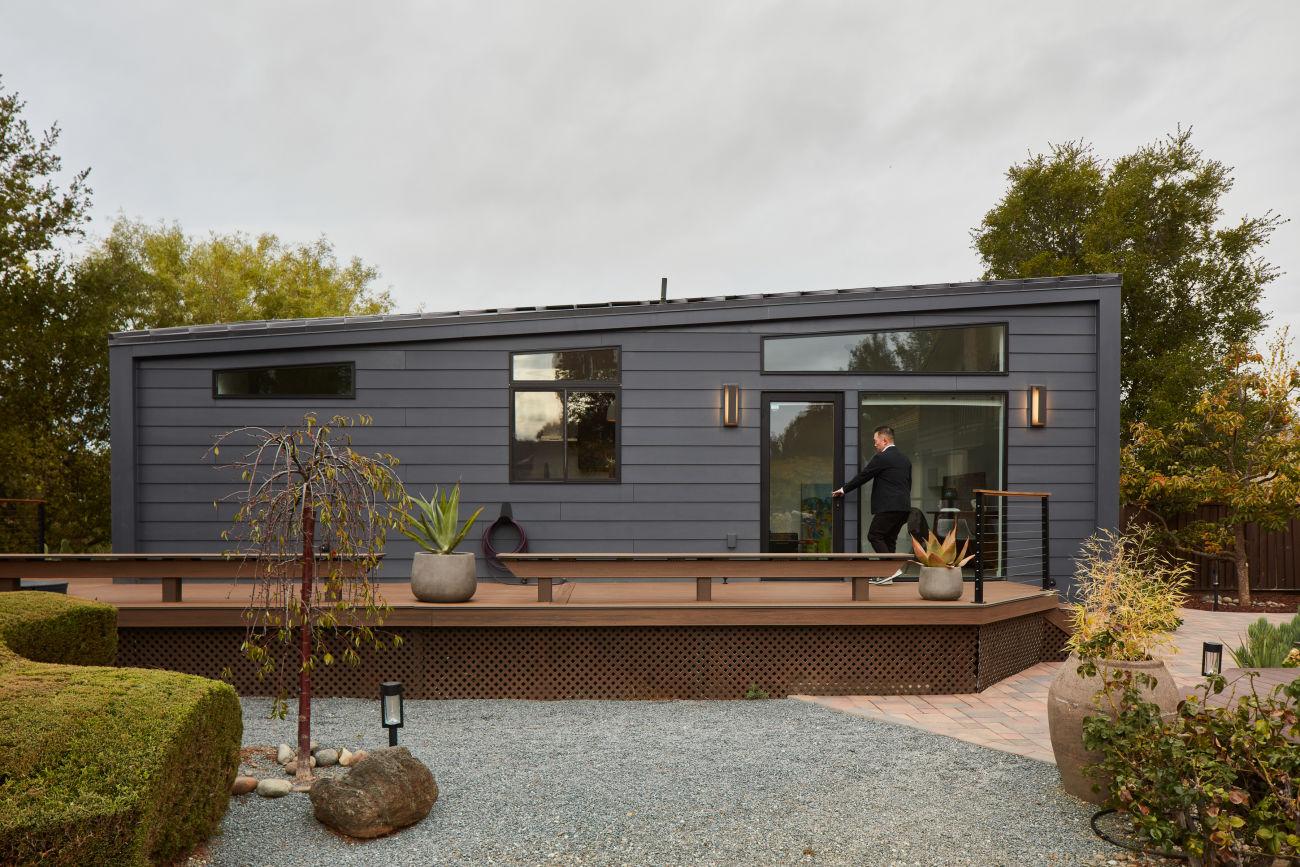
An Abodu One in San Jose.
Get your free ADU assessment.
Want to know if an ADU will work on your property? Fill out the form below and our experts will perform a remote assessment of your property.
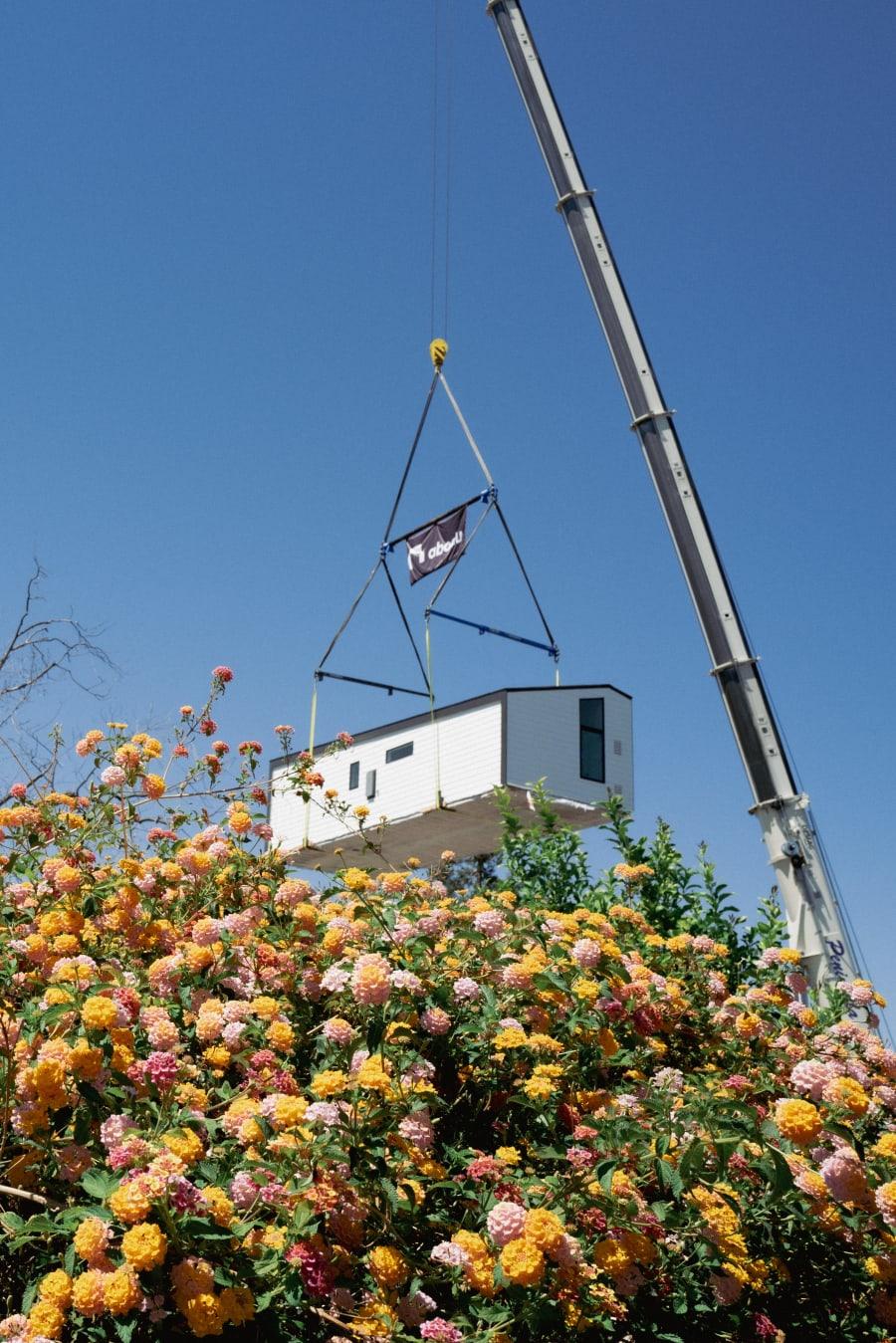
We'll handle the permits.
Delivered in as little as 6 months.
No hassle installation.
Expand your home’s value and livable space.
Find your new Abodu.
Check the availability in your area.
